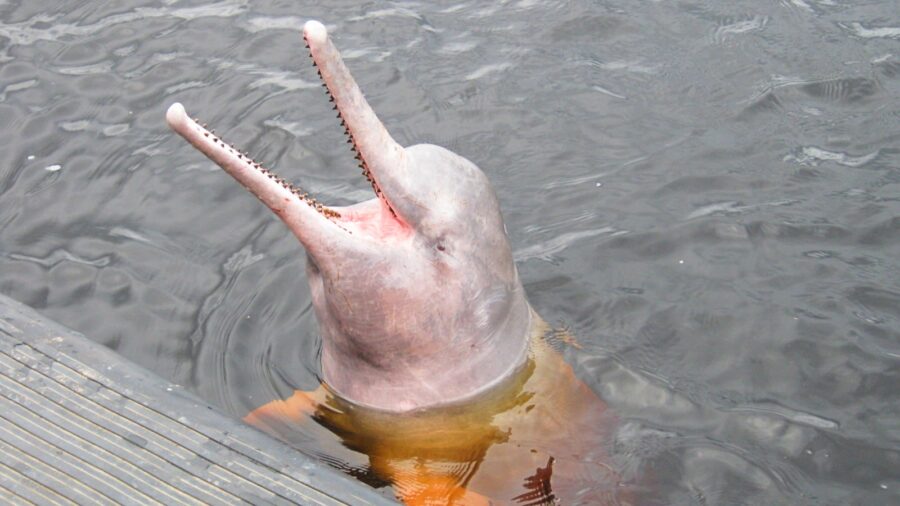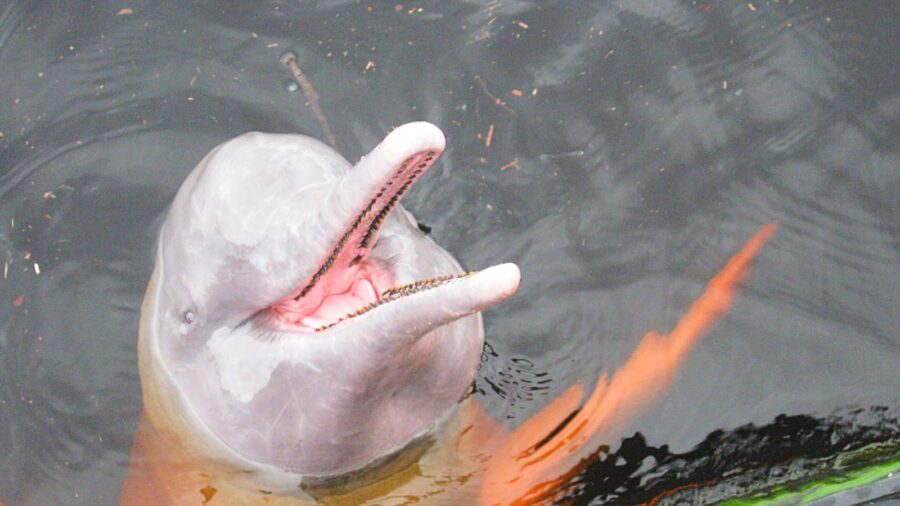See An Extremely Rare Pink Dolphin Swimming Through The Ocean
This article is more than 2 years old

Nature is strange and mysterious, just when we, as a species, start to get comfortable with our knowledge of the world around us, something weird comes by and challenges everything we know. Such is the case on Twitter, when @DailyLoud shared a video of a pink dolphin swimming alongside “normal” dolphins. While incredibly rare, pink dolphins do exist in nature, and are the source of a South American myth similar to the mermaid.
Pink dolphins can develop from one of two endangered freshwater dolphin species, indigenous to the Peruvian Amazon, commonly referred to as “boto.” The tuxucii, or grey, river dolphin is similar to the saltwater bottlenose species, while they live in the same habitat as the pink dolphin, explaining why in the clip both colors of the mammal can be seen in the same pod. At birth, both species look similar, as the pink coloration develops over time and can be uneven, resulting in the patch work pink seen in the clip.
Amazon pink river dolphins are the largest of the freshwater dolphins, growing up to nine feet and 400 pounds, with an average lifespan of 30 years. The carnivorous species eats a wide-variety of food, including piranhas, adjusting its diet accordingly based off of the season. To go with the increased size and diet, the pink freshwater dolphins also have enormous brains, displaying 40 percent more capacity than humans.
An unique adaptation that lets the Amazon pink river dolphin swim among the tree-lined riverbanks is their unfused neck vertebrae, which lets them move their neck up to 90 degrees when swimming through clogged waterways. The long snout is another development based on the environment, letting the dolphin root around in the riverbed for shellfish and crustaceans. The strange pink coloration is also theorized to have developed for mating purposes, with the males more likely be pink and the pinker the skin, the more likely to attract a female.

Courtship rituals among Amazon pink river dolphins can include the males beating the water with thick grass, or displaying a particularly good kill, usually a turtle. Females can be pregnant with one calf from 11 months to 15 months, a gestation period that helps explain why the species is endangered today. Outside of the mating season, groups of pink dolphins seen together are usually just a mother and her young.
While the Amazon pink river dolphin tends to be isolationist, most of them are also incredibly curious about humans and will go up to boats, or fishermen, and poke around with their long bottlenose. This behavior led to the mermaid myth of “boto encantado,” pink dolphins that would morph into handsome men by night to seduce local women, or to bring them down to a mythical underwater city. These myths are usually told as warnings to prevent swimming in the river during the night, or to encourage people to swim in groups instead of solo, just in case.
While the Twitter clip is amazing, the Amazon pink river dolphin is an actual species, and not, as mentioned in the comments as a theory, the result of pollution. Rare to the point of being considered mythical, pink dolphins are endangered, with humans the biggest threat they face in their native Amazon. Local Peruvian conservation groups are working to preserve the amazing species, just another example of how strange and wonderful nature can be.











